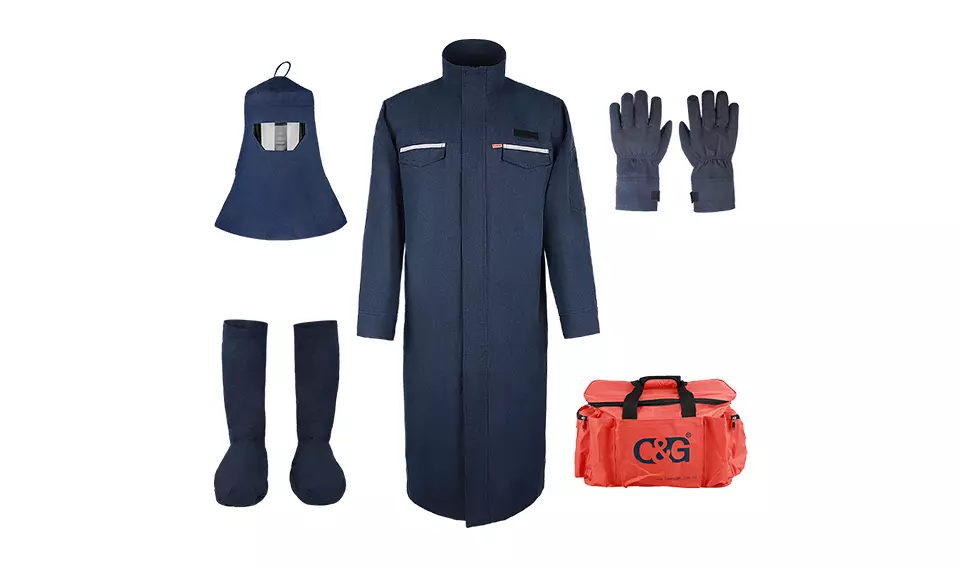
Several ways to choose arc protection clothing
When choosing arc protection clothing, you need to consider multiple aspects to ensure that you choose clothing that is both safe and suitable for your personal needs. Here are some key selection methods:
1. Understand the basic classification and protection level of arc protection clothingClassification: Arc protection clothing is mainly divided into arc protection operating clothing (long gown type) and arc protection work clothes (three-tight jacket and trousers type). The former is mostly used for electrical operations and has a higher protection level (ATPV≥10cal/cm²); the latter is used as daily work clothes and has a slightly lower protection level (ATPV≥5cal/cm²).
Protection level: According to ATPV (arc heat resistance standard value), arc protection clothing is mainly divided into four levels. Different levels of arc protection clothing are suitable for different working environments and risk levels.
Level 1: 4cal/cm2≤ATPV value<8 cal/cm2
Level 2: 8 cal/cm2≤ATPV value<25 cal/cm2
Level 3: 25 cal/cm2≤ATPV value<40 cal/cm2
Level 4: ATPV value≥40 cal/cm2. Level 4 has the highest level of protection.
2. Check product certification and standardsCertification: Check whether the product has relevant international or domestic certifications, such as CE certification, NFPA 70E standard, etc. These certifications can prove the quality and safety of the product.
Standards: Ensure that the product complies with relevant national or industry standards, such as: DL/T320-2019, GB8965.4 -2022, etc.
3. Evaluate material quality and performanceMaterial composition: Arc protection clothing is usually composed of multiple layers of materials, including surface materials, insulating materials and arc protection materials. These materials should have the characteristics of waterproof, oil-proof, corrosion-resistant, high permeability, high temperature resistance, high voltage resistance and high moisture permeability.
Thermal protection performance: Evaluate the flame resistant properties of the material to ensure that it can form a protective barrier when an arc flashes, giving the wearer enough time to escape.
Anti-burst performance: Some high-end arc protection suits use high-strength fibers such as Kevlar to enhance their anti-burst performance.
4. Consider wearing comfort and durabilityComfort: Choose arc protection suits that fit well and have good breathability to reduce discomfort caused by long-term wear. You can refer to user reviews or professional test reports to evaluate comfort.
Durability: Understand the durability and wear resistance of the material, as well as the service life and maintenance cost of the clothing. High-quality arc protection suits should be able to withstand multiple washings and long-term use without being easily damaged.
5. Pay attention to size and fitSize selection: Choose the appropriate size of arc protection suit according to your personal body shape to ensure comfortable wearing and not affect operation.
Fit: Check the cutting and sewing process of the clothing to ensure that it fits well and does not feel too loose or tight.
6. Understand after-sales service and warranty policyAfter-sales service: Understand the after-sales service provided by the supplier, including repair, maintenance, replacement and other services.
Warranty policy: Clarify the warranty period and warranty scope of the product so that timely support can be obtained when needed.
In summary, when selecting arc protection clothing, it is necessary to comprehensively consider product classification, certification standards, material performance, comfort, durability, size fit and after-sales service. By comprehensively evaluating these factors, you can choose arc protection clothing that meets safety requirements and suits personal needs.












